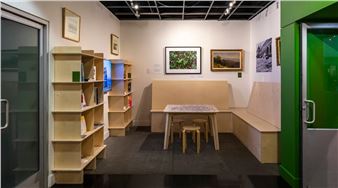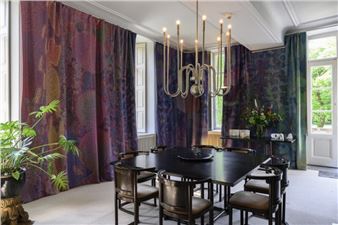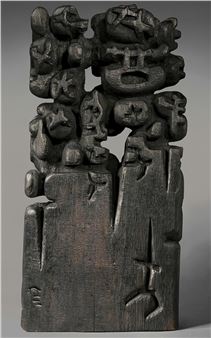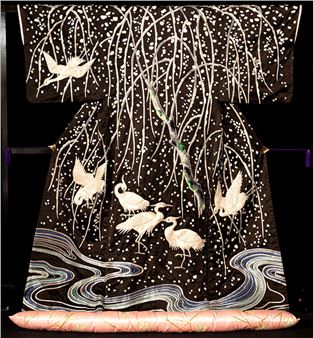Sara Sallam: Suturing Wounds
In Suturing Wounds, Egyptian artist Sara Sallam transforms fragmented histories into a tactile encounter.
Presented as a photographic installation at the Pitt Rivers Museum during Photo Oxford, the work features a series of self-portraits in which Sallam wears a tunic made from facsimiles of late antique Egyptian textile fragments. These small torn fabrics bear witness to the violent 19th-century practice of excavating Byzantine-era cemeteries in Egypt and tearing garments from the dead to satisfy the growing demands of Western museums during the Victorian era.
Produced in 2024 during her Jameel Fellowship at the Victoria and Albert Museum, Sallam reprinted archival photographs of textiles torn from the cemetery of Akhmim onto fabric, then stitched them together into a single, whole garment. By wearing the tunic outside Blythe House in London - a vast storage facility housing millions of artefacts from UK museums - Sallam enacts an embodied protest. The work rejects the confinement of these textiles, originally ornamented to protect the deceased, now admired solely for their aesthetic value. Through this gesture, the artist seeks to honour her ancestors whose graves were desecrated, restoring care, attention and remembrance to lives and histories long silenced.

Recommended for you
In Suturing Wounds, Egyptian artist Sara Sallam transforms fragmented histories into a tactile encounter.
Presented as a photographic installation at the Pitt Rivers Museum during Photo Oxford, the work features a series of self-portraits in which Sallam wears a tunic made from facsimiles of late antique Egyptian textile fragments. These small torn fabrics bear witness to the violent 19th-century practice of excavating Byzantine-era cemeteries in Egypt and tearing garments from the dead to satisfy the growing demands of Western museums during the Victorian era.
Produced in 2024 during her Jameel Fellowship at the Victoria and Albert Museum, Sallam reprinted archival photographs of textiles torn from the cemetery of Akhmim onto fabric, then stitched them together into a single, whole garment. By wearing the tunic outside Blythe House in London - a vast storage facility housing millions of artefacts from UK museums - Sallam enacts an embodied protest. The work rejects the confinement of these textiles, originally ornamented to protect the deceased, now admired solely for their aesthetic value. Through this gesture, the artist seeks to honour her ancestors whose graves were desecrated, restoring care, attention and remembrance to lives and histories long silenced.
Artists on show
Contact details


 ARTISTS
ARTISTS















